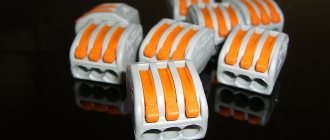Home » Alternative shipbuilding - Fleets that never existed » Large fleet of the alt-USSR - the beginning. Light cruisers of Project 26 and 26-bis
Alternative shipbuilding - Fleets that never existedAlternative shipbuilding - Fleets that never existed
Andrey 11/21/2018 1975
13
in Favoritesin Favoritesfrom Favorites 8
This article opens the series “Large Fleet of the Alt-USSR in the Great Patriotic War 1941-1945.” and is dedicated to the first large ships of the Alt-USSR - light cruisers of projects 26 and 26-bis . Subsequently, several articles are planned on the design and construction of battleships, aircraft carriers and light forces of the RKKF, as well as, possibly, an article devoted to the actions of the above-mentioned forces during the war years.
Surprisingly, but true, by some miracle a long civil war in Russia was avoided. Soviet Russia was able to begin economic restoration at the end of 1919, the NEP happened at the beginning of 1920, and Comrade Stalin reported on the early completion of the 1st Five-Year Plan in 1930 (it began in 1926 and was completed in just over 4 of the year). All this led to the fact that the economy of the AltUSSR in 1930, according to a number of indicators, was quite at the level of the USSR in the Republic of Ingushetia in 1934. How could this happen? I don’t know myself—the discussion led nowhere. However, we will proceed from the fact that the Bolsheviks somehow succeeded in all of the above.
Despite the fact that by the end of 1919 the fleet had become a completely nominal structure in terms of the number of ships, the basis of the fleet - the officer cadres - was preserved. Subsequently, in the period 1920–1931. The naval forces of the workers' and peasants' red army were replenished with the modernized battleships "Marat", "October Revolution" (the "Paris Commune" was completing modernization), three cruisers-minesags of the "Svetlana" type (7600 tons, 12 - 130 mm main gun, 29.5 knots and 250 min), two training ships (Kahul and Aurora), as well as 17 Novik-class destroyers and 8 Bars and AG submarines. It was even planned to complete the construction of the Izmail battlecruisers with new 406-mm artillery, in two- and three-gun turrets, but, unfortunately, the process was delayed (we will look at the details in the article about battleships). New ships were also built, but so far, alas, only the smallest — 8 Uragan-class patrol ships, submarines, torpedo boats... but more on that later.
Italian prototype for Soviet cruisers
At the end of the 1920s Not one of the USSR fleets could boast of a large number of modern warships; the situation with ships of large displacement was especially deplorable. Of the more or less modern projects, the RKKF only had three Svetlana-class cruisers, but these ships were laid down even before the revolution.
The first experiments in the design of even relatively small patrol ships of the Uragan type showed that the training of specialists, equipment, production facilities - all this the Soviet country had just yet to create, but this would take years and billions of invested rubles.
A modern, powerful fleet was needed now, therefore, the only reasonable remedy for the leadership of the RKKF at that difficult time was attempts to buy warships abroad. However, firstly, the situation in the world was such that more than one leading naval power did not want to part with its new ships voluntarily, and even at a reasonable price, and secondly, even then the USSR was considered in the West as a prototype of an “empire.” evil,” which was dangerous to arm at your own risk.
And yet, negotiations on the purchase of ships were ongoing.
Italian cruiser "Raimondo Montecuccoli" - prototype for "Kirov"
Notes
- When using a backup power plant on regular fuel.
- The dismantling of the cruiser was planned for 2021, but then it never happened.
- Named in honor of the light cruiser of the Twice Red Banner Baltic Fleet, which took part in the Great Patriotic War. He, in turn, was named in honor of the Soviet statesman Sergei Mironovich Kirov.
- During the first mooring in Severomorsk, the Kirov, despite its size and displacement, performed it with its own vehicles, without the help of tugs - which showed both the good handling of the cruiser and the professional skill of the commander and crew.
- It is noteworthy that the Red Banner Naval flag of the missile "Kirov" was genuine - the same one under which the light cruiser "Kirov" sailed during the Great Patriotic War. At first it was supposed to send this flag to the museum, but on the initiative of the council of veterans of the honored cruiser, its battle flag was presented to the crew of the new nuclear-powered ship.
- Quoted from “Order 800” by B. P. Ponomarev
- A number of sources erroneously indicate that during this cruise the main gearbox of the GTZA failed on the cruiser, which in fact did not happen - see “Order 800” by Boris Ponomarev.
- There are discrepancies with the exact date of the cruiser's renaming - there are versions about May and October 1992. In fact, the letters of the first name still remained on the stern of the cruiser, only painted over with ball paint to match the color of the side. After 2004, when the name “Admiral Ushakov” was assigned to a destroyer in service, the crew of the nuclear-powered cruiser again cleaned off the paint on the letters “KIROV,” although the first name was not officially returned to the ship.
- In the Soviet Navy, the crews of warships were formed during the construction phase, so for the first commander, the date of taking office does not coincide with the formal year the cruiser began service. In the list, the ranks of commanders are given for the period of their tenure; for those who were awarded another title during this time, it is given in parentheses.
The history of the creation of light cruisers of the Kirov class of Project 26
In the late autumn of 1930, a special naval commission under the leadership of the head of the Technical Directorate of the UVMS of the Red Army A.K. Sivkov in Italy negotiated the acquisition for the USSR of a number of warships of various types, including light cruisers, mainly light high-speed cruisers of the Condotieri type.
The Italians flatly refused to build ships for the USSR, but had nothing against the Soviet Union organizing the construction of similar ships on its territory, under the supervision of Italian specialists.
In the summer of 1932, a commission of the Navy and Soyuzverf, with the participation of the chief engineer of TsKBS-1 V.A. Nikitin, signed an agreement with the Soviet side to provide the Soviet side with one set of power plant and auxiliary mechanisms for a cruiser of the Raimondo Montecuccoli type, which was an enlarged and more balanced cruiser of the type "Condottieri", together with a theoretical drawing. According to the agreement, the Italian side also took on design consultations and technical assistance in the organization of slipway work and the production of boilers, turbines and auxiliary mechanisms.
General view of the Kirov-class light cruiser (Project 26)
According to the Soviet technical specifications, the new cruiser was supposed to have four 180-mm guns, four 100-mm universal and four 45-mm anti-aircraft guns, four 12.7-mm machine guns, two three-tube torpedo tubes, four two-seat DI-6 fighters on two catapults ; a maximum speed of 37-38 knots, an economical cruising range of 3000 - 3600 miles and a standard displacement of no more than 6000 tons. There was also an option with three two-gun turrets - two at the bow and one at the stern. Pre-design design was entrusted to the shipbuilding section of the Scientific and Technical Committee (STC) under the leadership of Yu. A. Shimansky. The project was assigned number 26.
In fact, even in general terms, the Soviet cruiser very vaguely resembled the Italian prototype. There was no talk of blindly copying Italian ideas.
The armament of the Project 26 ship was further strengthened compared to the original project; the armor scheme, the location of the artillery magazines, the stern contours of the hull, and the design of the stem were changed. The changes even affected the hull framing system: in contrast to the transverse Italian scheme, they decided to build the hull of the Soviet cruiser using a mixed system: in the middle part a longitudinal system was used with a frame spacing of 750 mm, and at the ends a transverse system was used, with a spacing of 500 mm. Unsinkability was ensured when any three adjacent compartments were flooded. Deck and side armor were taken into account as part of the main connections providing overall longitudinal strength. Due to changes in the recruitment system and a significant increase in the thickness of deck armor, the hulls of Project 26 cruisers were significantly stronger than the hulls of Italian ships.
The main battery of the light cruiser "Kirov"
The main turbo gear units have been modified to increase power. According to preliminary calculations, it was expected that with a displacement of about 7,700 tons, the cruiser would develop at least 37 knots during testing when the turbines were boosted to 126,500 hp.
The ships of Project 26, although they were delivered to the fleet not without criticism, nevertheless fully complied with the project and even exceeded the calculations in some respects. In fact, the Soviet Union managed to build a cruiser at the level of the best foreign designs, having the size and displacement of a light cruiser, but carrying an armament package worthy of a heavy cruiser.
Fast, powerful, distinguished by very effective means of combating survivability and developed means of automating fire control, the Project 26 cruisers became the first large surface ships of the Soviet fleet of new construction, launched after the revolution.
Video
Types of ships of the USSR Navy during World War II
| Battleships | “Sevastopol” • “Arkhangelsk”R • “Soviet Union” • project 24R • “Kronstadt”X |
| Light cruisers | “Svetlana” • “Kirov” project 26 • “Maxim Gorky” project 26-bis • “Chapaev” project 68-K • “Murmansk” L • “Comintern” • “Kerch” R |
| Destroyers | “Novik” • “Angry” of project 7 • “Sentry” of project 7U • “Experienced” S • “Fire” S • “Bold” L • “Active” L • “Valiant” L • “Worthy” L • “Friendly” L • “Hot” L • “Tenacious” L • “Burning” L • “Hard” L • “Monsoon” R • “Hummock” R • “Light” R • “Dexterous” R • “Dashing” R • “Flying” R |
| Leaders | “Leningrad” project 1 • “Minsk” project 38 • “Kyiv” project 48 • “Tashkent” • project 24P • project 47P |
| Submarine | type D (“Decembrist”) • type L (“Leninets”) II series • type L (“Leninets”) XI series • type L (“Leninets”) XIII series • type L (“Leninets”) XIII-1938 series • type Shch ("Pike") III series • type Shch ("Pike") V series • type Shch ("Pike") V-bis • type Shch ("Pike") V-bis-2 series • type Shch ("Pike" ") X series • type Shch ("Pike") X-bis series • type P ("Pravda") IV series • type K ("Cruising") XIV series • type M ("Malyutka") VI series • type M ( “Malyutka”) VI bis series • type M (“Malyutka”) XII series • type M (“Baby”) XV series • type C (“Middle”) IХ series • type C (“Medium”) IХ bis series • “Kalev”R • “Ronis”R • TS-1R • V-1R • V-2R • TM-4R • U-18R • N-22R • N-26R • N-27R |
| Patrol ship | “Hurricane” • “Pearl” • “Fog” |
| torpedo boat | G-5 • D-3 • “Komsomolets” |
| Minesweeper | "Fugas" • "Vladimir Polukhin" • project 253L |
Notes: S
: The only ship in the class;
R
: Ship received as reparations or trophy;
L
: Ship delivered under Lend-Lease;
X
: Unfinished;
P
: Unrealized project;
Characteristics of the light cruiser Project 26 (Kirov)
A country:USSRType:Light cruiserDate of issue:Indicated in the textDisplacement:7,970 t (standard), 8,675 t (normal), 9,550 t (full).Length:191.16 mWidth:17.7 mDraft:7.22 mReservations:Side, lower deck and traverses: 50 mm, conning tower: 150 mm, turrets: 50 mmCrew:881 peoplePower point:2 turbo gear units, 6 water tube boilers, total power: 122,500 hp.Travel range:2140 milesMaximum speed:34 knotsWeapons:
- 3x 3x 180 mm guns in MK-3-180 turrets.
- 6x 1x 100 mm universal guns in tower shields.
- 4x 12.7 mm DShK anti-aircraft machine guns
- 6x 45-mm anti-aircraft semi-automatic 21-K
- 2× three-tube 533-mm torpedo tubes 39-Yu
- 164 mines
- depth charges: 20 BB-1 and 30 BM-1
Characteristics are given for the light cruiser "Voroshilov"
Design features of the Kirov-class light cruisers of Project 26
The hull of light cruisers of the Kirov type was riveted, with a forecastle and transom stern. It had a forecastle, two decks - upper and lower (armored) and two platforms. The casting system is mixed: in the middle part (61-219 sp.) it is predominantly longitudinal, with a spat length of 750 mm; at the ends - transverse, with a spacing of 500 mm.
The ship's armor protection consisted of a side armor belt of homogeneous armor 50 mm thick, 3.4 m wide (with immersion in water of 1.3 m). Together with armored traverses on the 61st and 219th regiments. and an armored (lower) deck also 50 mm thick, this belt formed the 121st citadel (64.5% of the hull length). Under its protection were the main mechanisms, units and central control posts for artillery, a power plant, a navigation station, and ammunition cellars. Armor of 50-150 mm also protected the conning tower, main caliber turrets, steering and tiller compartments (20 mm), as well as torpedo tube aiming posts (14 mm), main caliber control post (8 mm), stabilized aiming posts and 100 mm shields guns (7 mm).
The main caliber artillery consisted of nine 180-mm B-1-P guns in three three-gun turrets MK-3-180. The B-1-P gun was designed by the design bureau and put into production in 1932. The B-1-P gun provided an initial velocity of a projectile weighing 97.5 kg of 920 m/s and a maximum firing range of 37.5 km. The 57-caliber barrel was lined with the ability to replace liners in ship conditions without removing the swinging part from the turret. The shutter is a piston, two-stage, with weight balancing, opening upward. By 1941, the first guns installed on the Kirov had to be replaced with new ones with deeper rifling. This ensured that the survivability of the barrel was increased to 320 combat shots versus the previous 50-70.
Drawing diagram of the light cruiser "Kirov" project 26
Long-range anti-aircraft artillery included six 100-mm universal B-34 mounts located on the aft superstructure, three per side (two batteries). For each gun, 300 rounds of ammunition were provided with projectiles weighing 15.8 kg (high-explosive, diving, illuminating without parachute or remote grenade). The magazines for 100 mm cartridges were located on the 1st platform along the sides (from the aft engine room) between the 191st and 201st units.
Each gun had its own elevator. The firing of 100-mm guns was controlled by the Horizont system of naval artillery anti-aircraft fire control devices (MPUAZO), consisting of two roll-angle-stabilized aiming posts (SPN) with three-meter rangefinders of the DM-3 type, an anti-aircraft firing machine (ZAS) and SSSP. They were located sideways on the 3rd tier of the bow superstructure. In the SPN there were posts for commanders of batteries of 100 mm guns. The central MPUAZO posts with machine guns were located on the 1st platform side by side (near the cellar of the 3rd tower) between the 207th and 212th divisions.
The melee anti-aircraft artillery consisted of six 45-mm 21-K universal semi-automatic guns and four 12.7-mm DShK machine guns. It did not have a special control system; target designation was carried out by battery commanders. The distance to the target was measured with DM-1.5 rangefinders. The guns were placed on the bow and stern superstructures - two batteries of three guns each, and machine guns - on the bow superstructure. Ammunition: for 21-K installations - 600 rounds per barrel, overload - 650 rounds; for machine guns - 12,500 rounds each.
The cruisers were equipped with two 533-mm torpedo tubes 39-Yu (powder firing), developed in 1935-1936. They had three pipes and the ability to open the outer pipes by 7°. The torpedo tubes were equipped with central semi-automatic aiming devices, which were part of the Molniya torpedo firing control system (PUTS). When overloaded, the cruiser received barrage mines on the upper deck: 164 mines mod. 1912 or 100 min KB-1. To receive mines, 270 m long rails were provided on the upper deck. The mines were dropped into the water along two aft ramps.
The peacetime crew consisted of 54 officers, 148 petty officers and 532 Red Navy men. The officers and foremen of the teams were housed in cabins, and the Red Navy men were housed in eleven cockpits with three-tier bunks. The cruisers were equipped with a club with a cinema installation, baths, showers, a mechanical laundry, a hairdresser, an infirmary and an outpatient clinic.
The aviation armament consisted of a catapult and two aircraft, which were intended for reconnaissance and adjustment of main-caliber artillery fire. The catapult was located in the middle part of the ship between the pipes. Take-off was carried out by turning the catapult at an angle within 60-120°. The planes were parked on special platforms near the first funnel.
Additional weapons
General ship-wide countermeasures include two twin 150-mm PK-16 launchers (a complex of projectile jammers), anti-electronic decoys, decoys, as well as a towed decoy torpedo target with a powerful noise generator. The cruiser also has three navigation stations, four radio-electronic fire control systems for on-board weapons, helicopter flight controls and a “friend or foe” identification system.
The take-off deck at the stern of the cruiser Kalinin. Open hangar doors and deck helicopters Ka-25 and Ka-27 are visible
Each cruiser of Project 1144 is based on two heavy multi-purpose Ka-27 helicopters in the RLD and PL modifications. The helicopters are used in the anti-submarine version and as a relay-flight spotter for the Granit anti-ship missile system. The helicopter crew is 3 people (pilot, navigator and sonar operator). Maximum take-off weight - 11 tons, flight duration - 4.5 hours, ceiling - 4300 m, maximum speed - 270 km/h, flight range - 800 km. Helicopters can have APR-2E anti-submarine missiles (diameter - 350 mm, length - 370 cm) with a solid-fuel rocket engine that provides a speed of 115 km/h under water. Rocket weight - 575 kg, b/h - 100 kg. Underwater, the missile moves for 2 minutes, surveying a space with a radius of 1500 m and determining the bearing of the target with an accuracy of 2°. The helicopters are also armed with guided depth charges weighing 94 kg and moving at a speed of 55 km/h with an active hydroacoustic guidance system. The onboard radio-electronic complex of the Ka-27 helicopter ensures flight over the sea in any weather, search and tracking of submarines at a distance of up to 200 km from the ship, automatic launch of the helicopter to the point of release of weapons, return and landing in automatic mode.
The sonar system includes a sonar with a hull antenna (in a bulb fairing) for searching and detecting submarines at low and medium frequencies and a towed automated sonar system with an antenna of variable immersion depth (150-200 m) at medium frequencies.
Service history of the Kirov-class light cruisers of Project 26
Soviet light cruiser Kirov
Light cruiser "Kirov"
(Built according to project No. 26 at plant No. 189. Laid down: October 22, 1935, launched: November 30, 1936, entered the fleet on September 26, 1938, withdrawn from the fleet: February 22, 1974. Baltic Fleet) .
The construction of the Kirov cruiser proceeded with great difficulty, numerous breakdowns and defects, and missed deadlines for the construction of the lead ship of Project 26 became almost the norm. There was nothing to be surprised about here - the construction of a huge ship, especially a type that is fundamentally new for the country, is always a great test for industry. Unfortunately, the main builder of the Kirov, military engineer 2nd rank N.V. Grigoriev, paid for this with his head. After another batch of defects during testing, he was arrested and sentenced to death, and just a year later his replacement, V.L., was also arrested. Brodsky.
The cruiser, as they say, might not have entered service at all - at one of the final stages of testing, one of the training torpedoes fired from it, for some reason, described a circle and crashed into the side of the ship (the chairman of the commission for acceptance of the ship was arrested for this A.K. Vekman). However, all the flaws were eliminated and the ship was eventually recognized as fully ready for combat service.
From the end of 1939, "Kirov" was based in Tallinn, and in December 1939 it received a baptism of fire - it took part in the shelling of the Finnish battery on the island. Russare.
In August 1940, Kirov took part in large fleet exercises at the mouth of the Gulf of Finland. On September 1, he, at the head of the OLS, made the transition from Tallinn to Liepaja under the flag of the People's Commissar of the Navy N.G. Kuznetsov. In the fall of 1940, the cruiser went to Kronstadt for warranty repairs and to replace the main caliber gun liners.
On June 22, 1941, “Kirov” met at the Riga roadstead, under the flag of the commander of the light forces detachment, Vice Admiral V.P. Drozd, and already in the afternoon entered into battle, repelling a fascist air raid on the city and ships.
On July 1, the Kirov arrived at the main fleet base - Tallinn. From August 22 to 27, 1941, "Kirov", while on the Tallinn roadstead, fired at a concentration of enemy troops and repelled air raids. On the evening of August 27, the Kirov, together with other ships of the Baltic Fleet, covered the evacuation of ground units from Tallinn. On August 29, the Kirov dropped anchor in the Kronstadt roadstead, having safely completed the transition from Tallinn.
On the night of September 3-4, 1940, the cruiser fired at enemy troops on the Karelian Isthmus, firing 85 main-caliber shells. From September 4 to 6, he carried out more than 30 firing exercises, helping with his fire units of the 23rd Army to stop the enemy in the coastal area, at the turn of the Sestra River. The ship took part in repelling the September offensive on Leningrad, on September 7 it fired on the southern shore of the bay in the Oranienbaum area, and on the 8th, together with the battleship "October Revolution", fired at German troops in the Dyatlitsy-Kipen area.
On September 23, during an air raid, the cruiser received two direct hits. One bomb hit the starboard forecastle deck on the 110th ship. and exploded while passing through the command staff's cabins. The second, having pierced the upper deck in the area of the 100th ship, fell onto the lower armored deck and did not explode.
On April 4, 1942, during a massive raid on Leningrad, 10 bombs were dropped on the cruiser, 9 of which exploded near the side, and one hit the ship in the area of the 273rd line - it pierced two decks, the side and exploded already in the water. The KDP rangefinders failed, two gun mounts - 45 mm and 100 mm - were damaged, the outer plating and decks received significant dents.
On April 24, fascist aviation launched a third massive strike, during which the Kirov received direct hits from three air bombs and one six-inch shell. As a result of the bombing, the cruiser suffered significant damage. The ship's repairs, which began soon, took two months. The cruiser's anti-aircraft armament was strengthened; instead of six, eight 100 mm guns were installed; instead of a catapult - three 37-mm machine guns; The 45-mm guns on the aft superstructure were replaced with 37-mm machine guns, the number of which was increased to 12; two additional quadruple 12.7-mm Vickers machine guns were installed. In 1943, the upper deck of the cruiser was covered with armor plates 35 mm thick in two layers. The total weight of the slabs was 270 tons.
On February 27, 1943, by the Decree of the Presidium of the Supreme Soviet of the USSR, the cruiser Kirov was awarded the Order of the Red Banner for the exemplary performance of combat missions of the command in the fight against the Nazi invaders and the courage shown by its personnel.
In January 1944, an operation began to defeat German troops near Leningrad. "Kirov", along with other ships of the squadron, supported the advance of the 42nd Army with its artillery fire.
In June 1944, "Kirov", having taken up a firing position in the Leningrad commercial port, destroyed pillboxes and bunkers of the "Mannerheim Line" with main-caliber fire, ensuring the offensive of the Leningrad Front troops in the Vyborg direction.
On October 17, 1945, during firing practice, the Kirov was blown up by a German magnetic bottom mine. The cruiser received serious damage; repairs continued until the end of 1946. From November 1949 to April 1953, the cruiser underwent major repairs and modernization in Leningrad near the wall of plant No. 194.
On April 29, 1958, the honored ship was taken out of service and laid up in Kronstadt, but on September 6, 1960, it was reactivated, put into operation and transferred to the Leningrad Naval Base, and on August 3, 1961, reclassified as a training cruiser.
On February 22, 1974, the cruiser was expelled from the Navy and transferred to the OFI for dismantling for metal. They decided to preserve its two bow artillery towers - now they are installed on Morskaya Embankment on Vasilievsky Island as a monument to the famous ship.
Soviet light cruiser "Voroshilov" project 26
Comfort package
RUB 1,505,000
| Power frame | |
| Waterproofing the base (piping) | Ruberoid |
| Double row base | Edged timber 100x150mm |
| Floor joists | Edged board 50x150mm (600mm pitch) |
| Subfloor | Edged board 20x100mm |
| Frame of load-bearing walls | Edged board 40x150mm (600mm pitch) |
| Crossbars, jibs | Edged board 40x150mm |
| Partition frame | Edged board 40x100mm (600mm pitch) Edged board 40x50mm (600mm pitch) |
| Interfloor ceiling | Edged board 50x150mm (600mm pitch) |
| Rafter system | Edged board 40x150mm (600mm pitch) |
| Ceiling height | 1st floor - 2.40m, 2nd floor - 2.20m |
| Roof | |
| Lathing | Edged board 20x100mm |
| Countertrain | 20x50mm |
| Hydro-windproof membrane | Technohaut A |
| Roof covering | Metal tile Montreuil 0.45 (color green, red, brown, graphite) |
| Overhangs | 360-400mm |
| Facade finishing | |
| Wind protection | Technohaut A |
| Ventilation gap (rail) | 20x50mm |
| Finishing walls, gables, overhangs | Lining (chamber drying) |
| Platbands for windows and doors | Lining (chamber drying) |
| Installation of terrace fencing | Planed board 36x90mm |
| Interior decoration | |
| Thermal insulation Knauf Plate (floor, walls, ceiling) | 150mm |
| Soundproofing of partitions Knauf Plate | 50mm |
| Vapor barrier | Technohaut B |
| Finish floor | Dowel pile 36mm (kiln drying) |
| Finishing walls, partitions, ceilings, trims | Lining (chamber drying) |
| Ladder | Bowstring array; steps, railings, turned balusters; turned starting posts |
| Corner finishing | Curved plinth 35-40mm |
| Windows and doors | |
| Window blocks | Plastic two-chamber |
| Entrance door | Metal insulated with a lock |
| Interior doors | Paneled |
| Delivery and assembly | |
| Delivery within a radius of 450 km from Pestovo, Novgorod region. | Included in the price |
| Unloading and assembly | Included in the price |
| Guarantee | 5 years |











